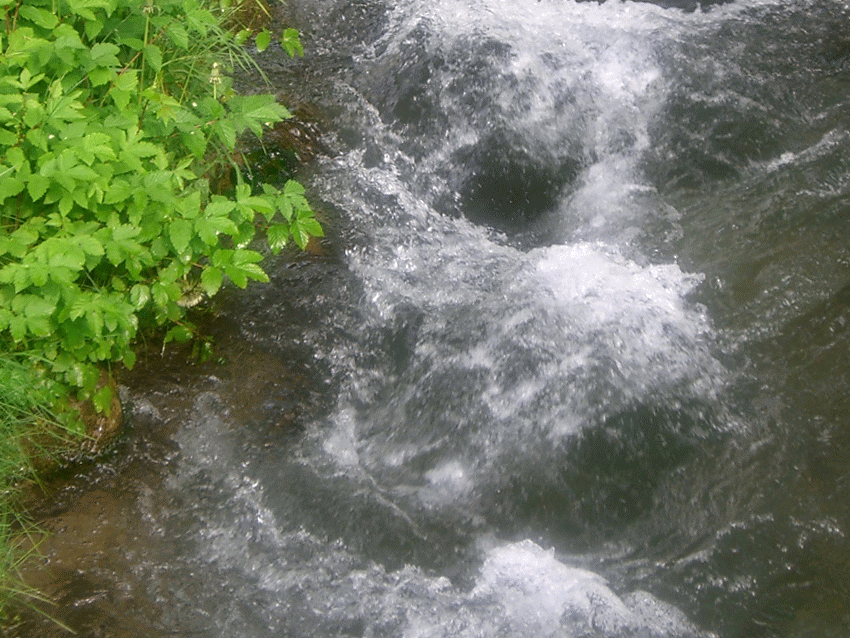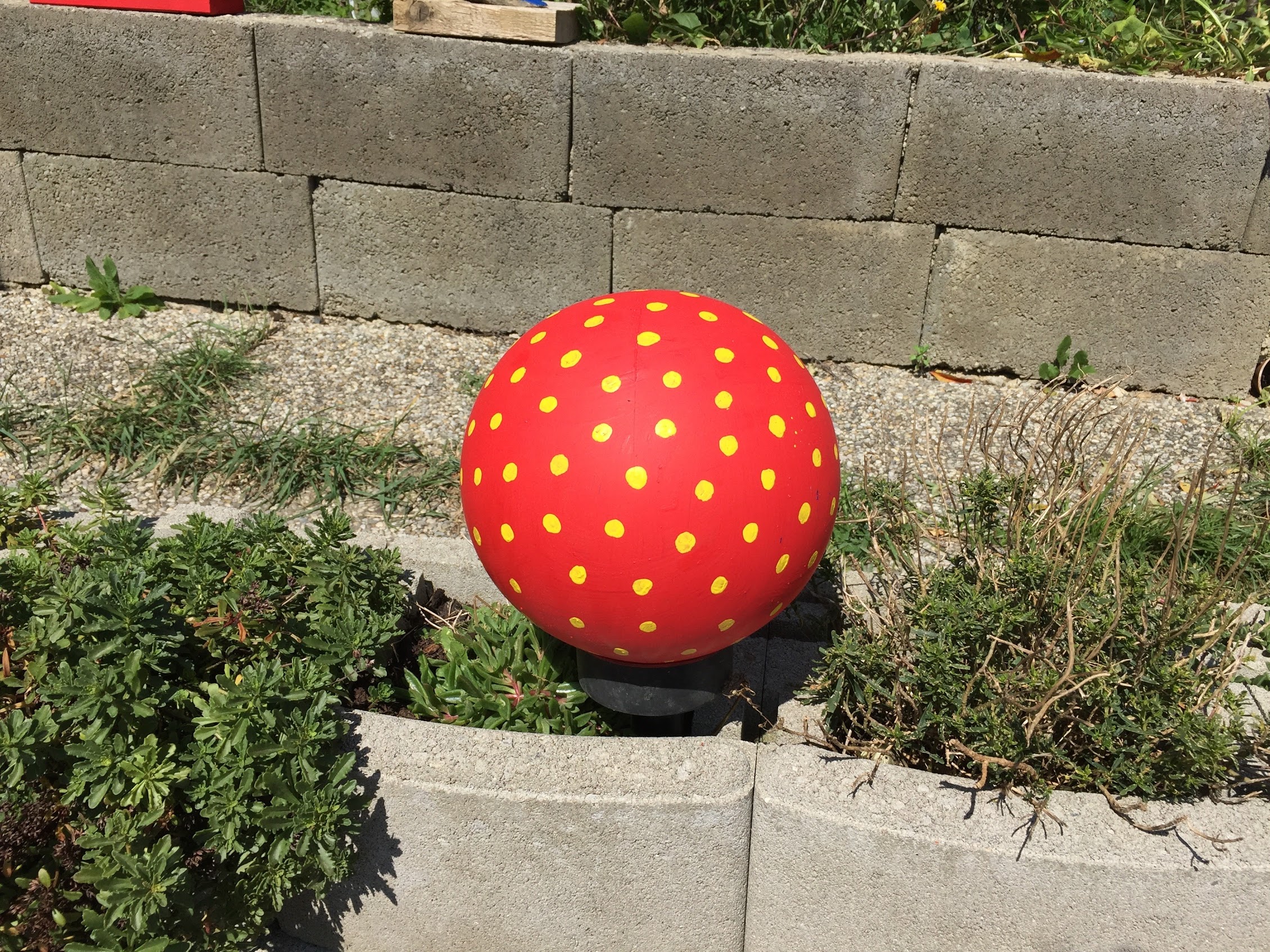Life at the Brook (narration, part 2)
This narration was first published in German language >> https://steemit.com/deutsch/@martinamartini/leben-am-bach-eine-erzaehlung-2 Here the English version. Hope you like it.
LIFE AT THE BROOK - a narration (2)
Part 2
My home is Carinthia, more precisely, the Gailtal. In the sixties and seventies, I grew up in a simple family home next to the brook Mühlbach, in Hermagor, a tiny town fringed by mountains, where the small valley Gitschtal merges (with its river Gössering) into the Gailtal valley with the dreaded Gail. The episodes "Life at the brook" are about my nature-related memories.
Respect for the floods
The access to the Mühlbach was respected by us children, because we were made aware of the danger of the raging water masses early on. The bed of the creek was relatively deep. The water had a high flow rate and so powerful that standing in the stream was unthinkable even for a strong adult.
Much has changed in recent years. As words such as "ecology" and "biotope" and "species conservation" became common usage, this stream was "returned", which meant that the streambed was irregularly fringed with mighty stones.
A second change, about two years ago, was less pleasant to the residents. The inflow was drastically reduced, so that from the former noise of the stream nothing more is heard, the brook is not even half of its former size and strength. The river Gössering from which the Mühlbach is fed, however, is situated only a couple of meters apart with its clear water and the permant murmuring and rushing of a typical river in mountainous regions.
We children had the habit (the "custom" as we said), to look into the brook, with its wonderfully clear and deep water, with the green filamentous algae fringing the edge in places, with the stones in their variety, interrupting the quiet running and causeng vorteces . And we cried out enthusiastically when we discovered a trout standing in the water. It takes healthy, practiced eyes to see trouts standing in moving water.
Child life at the brook
We children did not have anything we could have spared and what we wanted to throw into the streaming water, to see how it floated away. Except for a few grasses maybe, a few "churks" (cones of conifers). Our toys were too precious for us and a scolding would have been certain. We were careful not to play ball at the creek. A ball was something very precious. I would like to illustrate this briefly.
From the grandmother I got a coin every now and then. Joyfully, I treasured my humble treasure. Only once I got the idea not to save all the money, but to buy some of it. This something was a small red ball. I thought for a long time whether to buy it. Rarely have I been as excited as when I came home from the shop with my treasure. I treasured the ball like an eyeball ... I would never have dreamed of playing with the ball near the creek!
Folding paper boats and letting them swim away in the brook was not common. That seems to have remained so today... At that time, it was probably because the flow was too strong and paper boats were immediately overturned.
Today, it is more likely to be due to the fact that many children are no longer familiar with such simple games.
On both sides of the park were beautiful old chestnut trees, among them a red-flowering one. They embodied something serious and powerful for me. I often looked up and enjoyed the sun shining through the leaves. We children grabbed a chestnut leaf from time to time and we picked out the green between the ribs of the feathery leaves - every second one of the ribs at the beginning and then the rest.
In the fall I collected some horse chestnuts in the park. When they were fresh, they shone beautifully. I loved the scent of the autumn leaves of these trees. In a newspaper I discovered a crafting manual for cute animals, made from horse chestnuts, a couple of matches and a few other materials. How proud I was of my little menagerie!
I can not remember ever throwing a horse chestnut into the stream. Maybe I did not do it, because even then I appreciated the gifts of nature. Or did my grandfather tell me something about the cycles in nature? He was well read for the time. From overhanging branches, however, one of these bitter fruits dissolved now and then and fell by itself into the stream.
In the summer I liked to pick meadow flowers and four-leaved shamrocks. There were quite a few of them in the Schützenpark. Sometimes I found a bunch of these four-leaved signs of good luck. Between two blotter sheets, these "lucky clover" were carefully pressed. A harmless superstition!
Playing was easy
The roads and paths along the Mühlbach were our playgrounds. At that time the city was still rich in children and single children like me were quite rare. After completing schoolwork, the children ran into the street and met with the neighboring children. Together, they set off and played games. Without a bike, without toys, without any equipment, we were able to have a good time for hours.
The Schützenpark, located between the river and the creek, was ideal for meeting and playing. It also served as a starting point for our nature excursions, which offered us a few steps from the houses of the old town to play.
(sequel follows)
Here is part 1 of the story:
https://steemit.com/story/@martinamartini/life-at-the-brook-narration-part-1 (English)
https://steemit.com/deutsch/@martinamartini/leben-am-bach-eine-erzaehlung-1 (Deutsch)
Here is Part 2 in German (Deutsch):
https://steemit.com/deutsch/@martinamartini/leben-am-bach-eine-erzaehlung-2


@originalworks
The @OriginalWorks bot has determined this post by @martinamartini to be original material and upvoted it!
To call @OriginalWorks, simply reply to any post with @originalworks or !originalworks in your message!
Lovely story. Thank you so much for sharing!

Wow, this was quick! Thank you! :)
This post has received a 0.20 % upvote from @drotto thanks to: @banjo.